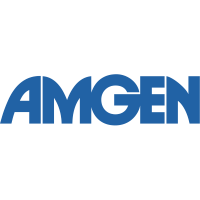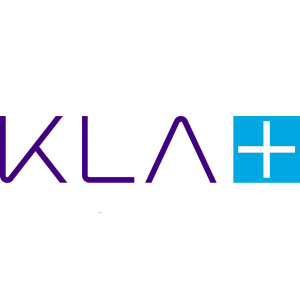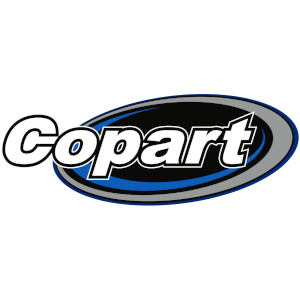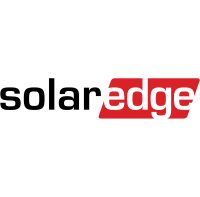
U-Haul Holding Co
NYSE:UHAL


| LU |

|
FREYR Battery SA
NYSE:FREY
|
Electrical Equipment
|
| CN |

|
Alibaba Group Holding Ltd
NYSE:BABA
|
Retail
|
| US |

|
Kroger Co
NYSE:KR
|
Retail
|
| US |

|
JPMorgan Chase & Co
NYSE:JPM
|
Banking
|
| US |

|
MSCI Inc
NYSE:MSCI
|
Financial Services
|
| SG |

|
Sea Ltd
NYSE:SE
|
Media
|
| US |

|
Amgen Inc
NASDAQ:AMGN
|
Biotechnology
|
| US |

|
Automatic Data Processing Inc
NASDAQ:ADP
|
Technology
|
| US |

|
KLA Corp
NASDAQ:KLAC
|
Semiconductors
|
| US |

|
Copart Inc
NASDAQ:CPRT
|
Commercial Services & Supplies
|
| CH |

|
CRISPR Therapeutics AG
NASDAQ:CRSP
|
Biotechnology
|
| US |

|
iRobot Corp
NASDAQ:IRBT
|
Consumer products
|
| US |

|
Plug Power Inc
NASDAQ:PLUG
|
Electrical Equipment
|
| US |

|
Alphabet Inc
NASDAQ:GOOGL
|
Media
|
| US |

|
Old Dominion Freight Line Inc
NASDAQ:ODFL
|
Road & Rail
|
| IL |

|
Solaredge Technologies Inc
NASDAQ:SEDG
|
Semiconductors
|
Utilize notes to systematically review your investment decisions. By reflecting on past outcomes, you can discern effective strategies and identify those that underperformed. This continuous feedback loop enables you to adapt and refine your approach, optimizing for future success.
Each note serves as a learning point, offering insights into your decision-making processes. Over time, you'll accumulate a personalized database of knowledge, enhancing your ability to make informed decisions quickly and effectively.
With a comprehensive record of your investment history at your fingertips, you can compare current opportunities against past experiences. This not only bolsters your confidence but also ensures that each decision is grounded in a well-documented rationale.
Do you really want to delete this note?
This action cannot be undone.

| 52 Week Range |
55.15
78.4
|
| Price Target |
|
We'll email you a reminder when the closing price reaches USD.
Choose the stock you wish to monitor with a price alert.

|
FREYR Battery SA
NYSE:FREY
|
LU |

|
Alibaba Group Holding Ltd
NYSE:BABA
|
CN |

|
Kroger Co
NYSE:KR
|
US |

|
JPMorgan Chase & Co
NYSE:JPM
|
US |

|
MSCI Inc
NYSE:MSCI
|
US |

|
Sea Ltd
NYSE:SE
|
SG |

|
Amgen Inc
NASDAQ:AMGN
|
US |

|
Automatic Data Processing Inc
NASDAQ:ADP
|
US |

|
KLA Corp
NASDAQ:KLAC
|
US |

|
Copart Inc
NASDAQ:CPRT
|
US |

|
CRISPR Therapeutics AG
NASDAQ:CRSP
|
CH |

|
iRobot Corp
NASDAQ:IRBT
|
US |

|
Plug Power Inc
NASDAQ:PLUG
|
US |

|
Alphabet Inc
NASDAQ:GOOGL
|
US |

|
Old Dominion Freight Line Inc
NASDAQ:ODFL
|
US |

|
Solaredge Technologies Inc
NASDAQ:SEDG
|
IL |
This alert will be permanently deleted.
 U-Haul Holding Co
U-Haul Holding Co






 You don't have any saved screeners yet
You don't have any saved screeners yet

Good morning and welcome to the AMERCO First Quarter Fiscal 2019 Investor Call and Webcast. All participants will be in a listen-only mode. [Operator Instructions]. After today's presentation there will be an opportunity to ask questions. Please note that this event is being recorded. And the correct title is AMERCO First Quarter Fiscal 2020 Investor Call and Webcast.
I would now like to now turn the conference over to Mr. Sebastien Reyes. Please go ahead, sir.
Good morning and thank you for joining us today. Welcome to the AMERCO first quarter fiscal 2020 investor call.
Before we begin, I would like to remind everyone that certain of the statements during this call including, without limitation, statements regarding revenue, expenses, income and general growth of our business may constitute forward-looking statements within the meaning of the Safe Harbor provisions of Section 27A of the Securities Act of 1933 as amended and Section 21E of the Securities Exchange Act of 1934 as amended.
Forward-looking statements are inherently subject to risks and uncertainties, some of which cannot be predicted or quantified.
Certain factors could cause actual results to differ materially from those projected. For a discussion of the risks and uncertainties that may affect AMERCO's business and future operating results, please refer to Form 10-Q for the quarter ended June 30, 2019, which is on file with the U.S. Securities and Exchange Commission.
I will now turn the call over to Jason Berg, Chief Financial Officer of AMERCO.
Thanks, Sebastien.
Speaking to today from Phoenix, Arizona after a few minutes of prepared remarks we will open it up for question-and-answers with you.
Yesterday we reported first quarter earnings of $6.76 a share compared to $6.53 a share for the same period in fiscal 2019. Equipment rental revenues increased just over 4% at approximately $32 million. We saw an overall improvement in the number of transactions along with revenue per transaction. Revenues from both the one-way and entire markets increased and these trends were similar for both truck and trailer.
Compared to the end of the quarter last year, we had a modest increase in the number of independent dealers that are in network, along with an increase of approximately 80 company-owned locations. U-Move revenue growth has continued into July.
Capital expenditures on new rental trucks and trailers were $561 million this quarter compared to $440 million. Our truck purchase schedule is skewed heavier to the first half of the fiscal year. Proceeds from the sale of retired equipment decreased by nearly $29 million to $158 million in fiscal 2020. The decline in proceeds was a result of the pace of sales in the first quarter of last year being higher than usual rather than there being any weakness in the resale market this year.
In fact gains from the disposal rental equipment were flat for the quarter, while the number of units sold decreased by a few thousand. Our sales process is giving us an indication that we've made some progress on the equipment damage issues that we've mentioned here over the last couple of years.
Storage revenues were up $12 million or 14%.
Average monthly occupancy throughout the first quarter of this year for the entire portfolio was 68%.
To give you a sense of same-store occupancy performance. On this call last year, I reported to you that locations opened at least three years had average occupancy of just over 87%. While looking at those same locations this year they are up to 88.5% about a 1.5% improvement.
A large portion of the revenue gain came from the growth in occupied rooms. The average number of occupied rooms during the first quarter of this year increased 40,100 rooms compared to the same time last year. If you look at just the end of June instead of the three month average, the increase came in at just over 43,000 about a 70% improvement in the pace of net movements compared to last year at this time. And we've continued to accelerate this pace now into July.
Our real estate related CapEx for the first quarter of this year was $218 million that's just about what it was last year at this time. However within those figures there's been some reallocation. The portion attributable to acquisitions has declined, while the amount coming from construction improvement has increased. Over the last 12 months, we've added 5,780,000 net rentable square feet to the portfolio about a 1.09 million of that came on here during the first quarter.
Operating earnings in the Moving and Storage segment increased to $1.5 million to $202 million for the quarter. I want to touch on a couple items here. First depreciation expense on the rental fleet was up $8 million while depreciation on all other assets largely storage-related assets increased by about $6 million. Gains on the sale of rental equipment were flat and we did recognize a $1.6 million gain on the disposal of real estate. This was due to the condemnation of a portion of one of our properties out in Texas.
Personnel costs, property insurance expense, property taxes, and freight expense were four of the larger expenses that generated increases in the quarter. These expenses in aggregate were up approximately $31 million. Of note, we did see some relatively small decreases in fleet maintenance expense for the quarter.
As of June 30, cash and availability from existing loan facilities that are moving towards segment totaled $576 million.
One last comment before we go to question. As of April 1st of this year, we were forced to adopt the new accounting standard for leases. The adoption resulted in nearly $1 billion of net property plant and equipment being recast to a new balance sheet item called right of use assets financed. As of June 30, 2019, the balance of this new line item includes rental equipment that we purchased under financing liability leases what I would call capital lease. Operating leases primarily locations that were leasing the ground from moving centers, are included in right of use assets operating.
In our earnings release, we have included a non-GAAP table on the last page to help compare our PP&E from this year to previous years. I would certainly welcome any feedback from our investors on how to improve this disclosure related to the new standard. While this caused the geography of our balance sheet to change, there was no economic impact to our business from the adoption of this new accounting standard.
With that, I'd like to hand the call back to Nancy, our operator, to begin the question-and-answer portion of the call.
Thank you. We will now begin the question-and-answer session. [Operator Instructions].
And our first question comes from Ian Gilson from Zacks Investment Research. Please go ahead.
Thank you. Revenue was up 4.5%, revenue was up 3%. So we sort of squeezed the margins somewhere and this has basically been happening over the past year since [indiscernible], when can we see a reversal basically of that trend.
Great. Great point, Ian. Well we're working very hard right now to reverse that trend. On the equipment side, I would say that the first half of this year we're increasing the fleet from a timing perspective is going to happen more in the first half and we're going to need to try to catch-up to the fleet growth here on the transaction side and that didn't happen in the first quarter. So utilization was down just a little bit.
On the storage side, much of the focus in the organization has been on filling storage rooms. And I would say that in the first quarter we had quite a bit of success in doing that. And from what I've seen in July, we've increased that pace even faster. So our issue right now is utilization of the assets that we've invested and the financial performance is reflecting the fact that we're not fully utilized.
I don't have a specific time where I can tell you in two years it's all going to be fixed. Some of it will continue to depend upon the pace of reinvestment. But I think it's important to understand that there's continued demand for renting the equipment and we're seeing a good pace of filling these rooms that we're building. So at some point, we're going to start seeing the payback. On the storage side, I think we're starting to turn the corner there.
Okay. On the depreciation line in 2018 it was $126 million, 2019 $126 million, and then this year $141 million now that basically you said well we have $8 million.
The equipment went up $8 million for the quarter compared to last year at this time. And everything else which is largely buildings, improvements in the equipment that we put in the building is up about $6 million a quarter.
And should that stabilize moving forward?
We're going to see depreciation continue to climb this year with the amount of box trucks that we're buying. In particular we're buying a lot of the 26 foot trucks which are most expensive truck. That's front-loaded at the first half of this year.
Our dynamic depreciation on the fleet we take the largest depreciation charges in the first year. So we're going to see depreciation on the fleet continue to increase throughout the year. And I think as we put more of these real estate assets online and we build out of them we're going to see that continue to climb also. But I don't think we're going to see that number come down here in the near future.\
So what I'm hearing you say basically you are going to continue to emphasize fleet purchase as compared to fleet leasing.
To us it's one and the same. However we choose to buy it, but I'll say fleet acquisition.
Okay. And have the new accounting regulation changed your perspective on how to invest?
No. We haven't seen our lenders react in the changes to how they want to finance the equipment. So most of what we're doing right now is capital leases those were on balance sheet before for us. So again I haven't seen anything where there's been an economic impact to us from that standard, it's just been a whole lot of work for the accountant.
And our next question comes from Jamie Wilen from Wilen Management. Please go ahead.
Hey Jason. In the last call Joe talked about his most important figure in looking at truck rental was the utilization rate. Obviously that's down a little bit but the utilization rate is a very simple number the number of trucks out there and how many rentals we have. My question is why don't we reduce that denominator. Why don't we reduce? Why are we greatly expanding our truck fleet so much? I love to see you haul trucks on the road but I'm really not in favor of when I go past the dealership seeing 25 trucks sitting there, why don't we try to optimize this truck fleet as opposed to maximize it, so we can optimize the utilization rate.
Well our whole goal here is to try to optimize that. So I would hope that when you see the 25 trucks that's on a Wednesday and not on a weekend but I completely get your point where we're at today is our teams -- these opportunities that with additional fleet when we get it distributed to the right market where we think it's going to be needed, I think we'll see utilization climb.
Now we saw that last year, we slowed purchase a little bit, utilization improved. This year, we wanted to go back and hit the fleet a little bit. We have a little bit of extra purchases this year in our largest truck because Ford is getting ready to change over the model and have a new engine. And for a number of reasons including our ability to efficiently repair those units in the future, we're probably buying a little bit heavier than what we normally would buy right now. But it's going to give us the flexibility in the future to do the kind of pivoting that you're talking about, that if we want to do.
The quickest way for us to adjust fleet size is through sales not necessarily through on the acquisition side. You want a certain amount of new trucks coming in at our current size gross lead spend a year is probably going to be somewhere around $1 billion in order to maintain a sized fleet this much. And from what we can tell, we still think that we're going to be able to get to that optimization point with this many trucks.
Would you believe your fleet expenditures next year to be larger equivalents or smaller than what you're going to do this year?
I think it'll be less next year because I don't think we're going to have this little bit of displacement from the 26 foot truck.
Okay. And then as you look out on the self-storage side when do you reach that inflection point where you say let's slow down our capital expenditures and just run with what we have to improve again the utilization rate of the self-storage operation as well as profitability because as we know, the new ones we open don't really add to income there. They detract for a couple of years.
Yes. And I think we're at that point and it's probably not the easiest to see but in the first quarter, we spent $218 million on acquisitions and construction which is what we spent last year. But in that the acquisition piece of that was down from $124 million to $73 million. So we bought fewer properties and we've been trending down that way. And we've been spending more on trying to complete the project that we have so that we can start renting them and getting some cash flow out of them. So there has been a bit of -- I'll use the word again a bit of a pivot to completing what we have and not bringing in new properties for that.
So as you look out to next year would you expect your capital expenditures on self-storage to be lower than what it's going to be this year?
No, I think if anything maybe we have another year of high construction costs which might fill in the gap for decreased acquisitions. But I view that as a good thing. We have this large group of less than productive assets on the balance sheet right now that you're talking about, I've been talking about and the sooner we can get those projects built out and finished and our guys renting them guys and girls renting them, the better off we're going to be. So on the acquisition side, that's kind of opportunistic but I think we're a little bit more focused right now on finishing what we have versus finding a whole bunch of new stuff.
Okay. The existing self-storage units you mentioned that three-year figure they've gone from 87% to 88.5% occupancy rates. How are the rates on per square foot that we're renting those facilities for --?
There's a lot going on --
Have they changed?
There's a lot going on in the quarter. So if I try to dig down into a same-store rate to get a health, a pull for what the health is on same-store rate. I think we're probably up a 1% or 1.5% on rate. Overall for the quarter, I think if you were to do the math it would look like our average revenue per unit decreased a bit. And I think we used our promotional special for one month, free storage with the rental of a truck. What was a little more prevalent this quarter versus the first quarter of last year which probably affected the revenue per storage unit a little bit there.
But otherwise the underlying health of the storage rate has been fairly resilient for us and we're seeing smaller increases whereas we used to see maybe a 3% increase for the year less than that. But we're still seeing some increases and are asking rents for people who are moving in today are above where they were at before. Whereas some people are getting all their revenue increases from the in-place customers. We're still seeing some health at the asking rent.
Okay. And then the new facilities, your leasing is going. You mentioned July was a bit of an accelerated rate. How's the household market out there? How much additional discounting do you have to do to increase those occupancy rates?
For us what we've found is it's our people paying attention to the product and the increased utilization of the discount from the truck rents I think is a reflection of just us paying a little bit more attention where we have a captive customer, who's utilizing another one of our products and we should be offering them storage in the process. And I think that that focus now has resulted in everyone more success in filling rooms faster. So I think that's a big part of what's happening here.
Okay. And lastly on self-storage, in the last year, how many of your units that were relatively immature have now crossed over to where they are positive cash flowing as opposed to negative?
Great question. I don't have the number of units that I would say in previous calls and I think discussed on the analyst meeting last year. We've been tracking the cash flow profitability of locations over the last 18 quarters. And that number continues on a year-over-year basis to improve. So on those say 395 properties that we've been tracking here over the last four years, I think there's been about a $5.5 million improvement in NOI quarter-over-quarter here. So I think I'm looking at them in quarterly cohorts and I think we've picked up two or three more quarters of acquisitions that turn profitable or turn to positive, I should say.
Okay. And has Joe made any progress on changing the corporate name from AMERCO to the more well-known U-Haul?
I think he is out fast filling rooms right now and that's a little bit down the road.
The next question comes from George Godfrey from C.L. King. Please go ahead.
Hi George, are you there?
The next question comes from George Godfrey from C.L. King. Please go ahead.
Are you on, George? I can now.
Now, yes, good morning. Can you hear me now?
Yes.
Okay. Sorry about that I was on speakerphone but usually I don't have that issue. Jason, I heard everything you said about the investments in the fleet and in the rooms the storage facilities. If I look at net CapEx for FY 2017 and 2018 actually the net CapEx was down due to strong proceeds from the sale of property and equipment. But if I look at 2019, the year that we just completed net CapEx was up 90% and listening your comments and looking at Q1, the net CapEx being up again another 90% in Q1, you're expecting a real --a large net CapEx figure for 2020 relative to what we saw in the prior year's coming into 2019 is what I'm taking away.
Yes, it's going to slow down over the next three quarters. This is going to be the heaviest that we've seen. But yes, it's still going to be heavy.
Okay. And then the pace of rooms being filled up, do you see the occupancy rate being at an inflection point here, 68.4% in Q1 or do you think that that still trends down as you're bringing on the square footage?
I look so little at that overall occupancy rate because it's affected by how good of a job we're doing by adding rooms into the portfolio and then doing a better job at adding rooms. I'll say that the spread between the percentage of rooms occupied and the percentage change in the rooms available, those two numbers have been coming together. So I think that's a good point.
I don't think we're quite at that inflection point yet because we're -- it's easier to add rooms than it is to fill rooms. And we've done a good job of adding the rooms. But those two numbers are coming together and whereas we were plus 43,000 here at the end of June. I think we got that number closer to plus 50,000 here at the end of July. So our team is really hard at that and I don't think we're quite there yet, George, but I think we're getting closer.
And you said you are having more success at filling up those rooms. Is there something that changed in the market that is leading to that greater success in filling up the rooms?
No, it's the same thing that's usually the issue for us on a performance basis, how much we focus on it. And when we decide to actually get our act together and go at it. And this summer Joe has led the charge on focusing on filling these storage rooms and the organization as a whole has put most of their attention on that.
So you may see that in other areas but right now the storage program is certainly benefiting from that focus. I don't think that there's anything in the storage market if anything in the storage market continues to be more challenging. This is just more of a reflection of when we put our minds to something what we can accomplish.
Got it. And my last question, I'm looking at the slide presentation from last year's Investor Day and I know the next one will be coming up here in a couple of weeks. Specifically the pipeline of self-storage and it looks like it's about 11.8 million in square footage, the pipeline from a year-ago. Do you happen to know what that is approximately as we sit here today?
Yes, the projects that we have active right now that we're working on is about 10.9 million square feet. And then we have another group of projects that aren't as far along in the permitting or land-use process. I can give you a number. It's about a little over 3, 3.25 million square feet but I can't give you a date as that's much more squishy as far as when we'll be able to start those projects. But the big decrease has been, I don't recall the specifics on that slide but the pipeline of projects in escrow that we're looking to buy that number has come way down.
Okay. So that's what I was going to follow. So the 10.9 that you just quoted there is that -- is that comparable to the under contract figure that you had in your slide from a year-ago was 6 million.
I think the under contract that's the last column on the slide?
Yes.
Those are -- that that number is probably closer to I think 1.5 million square feet now.
Okay. So the pipeline under contract figures from a year-ago have both come down when you --
Yes.
Got it.
We closed on most of the under contract and that would have shifted up into the other numbers that I just gave you and then new stuff that we haven't bought yet but under contract is what I just told you.
The next question comes from Craig Inman from Artisan Partners. Please go ahead.
Hey Jason you there?
Good morning, Craig.
Hey, good morning. I was curious about leverage and with the CapEx build and the truck cycle being a lot heavier. How do you feel about balance sheet flexibility and specifically should economic conditions change? What kind of -- how do you ensure we have enough liquidity to move to a down cycle doing the CapEx builds on the self-storage?
Sure. Well we have a prioritization process on the storage side where conversion projects are at the top of the list because those are the easiest and the cheapest to complete and get up and running. And then we're a little more selective on which ground-up projects we choose to start because those take much longer or heavier from a CapEx perspective and we usually have a little bit -- well quite a bit less invested in just the land. So it's a little bit easier to put those up on the shelf and get to them a little bit.
So if something were to happen, we would immediately hit the privatization thing and probably start benching a bunch of the ground-ups and then we try to do our conversions in phases. So there's a point where we could stop and then just try to fill what we have and not spend any more money on those until they're more stuff efficient.
On the equipment side, we’ve certainly put ourselves in a position with the spending that we've done in the fleet that we could go for a while without spending a whole lot on box truck. There's a certain amount of rotation that we need to do on the pickups and cargo vans each year but that's fairly capital self supported. But it's not a huge working capital then for us.
So and from a liquidity perspective, we've been very fortunate to have an excellent and broad lending group who buy into our business plan and have been very receptive to lending on our assets. So we've tried to bring back some liquidity from assets that we've purchased that aren't stabilized yet but are certainly on their way to stabilization and we've had good success with terms and rates on bringing in some cash in the interim on those.
Yes, it makes sense. What about depreciation? I can get kind of closest figure but I'm curious if you could talk about it, depreciation as a percentage of the figure that's tied to real estate how would you think about that number?
I guess I haven't thought of that number in that relationship before. So I'd have to think about that and maybe get back to you. I haven’t really looked at that.
Okay. And then [indiscernible] called out, I know the trucks are different, weakness in the used market in terms of pricing, are you guys seeing any of that in advanced trucks or even the box trucks?
On the box trucks, no, not so much. We've done some things where we’re selling the equipment a little bit differently so we probably have but the gains on the box trucks sales have decreased a bit. But that’s such a small piece of the overall sales. Our base things is the pick-ups and the cargo vans and that market has still been strong.
Okay. And 1% change in utilization is still about or is it $5 million in revenue for the self-storage?
I think we're at like $5.3 million right now.
This concludes our question-and-answer session. I would like to turn the conference back over to management for any closing remarks.
Thanks Nancy.
First, I’d like to thank everyone for participating in this call. Thank you. And I want to remind you that on August 22 here in a couple of weeks as George said we have a few important meetings for shareholders. So at 9 A.M. call it Arizona time on the 22nd we are going to start off with our Annual Shareholder Meeting, once again this is going to be a live video feed broadcast over the Internet where everyone can participate in this meeting. And then about two hours after that at 11’o clock Arizona time we are going to do our virtual Analyst and Investor Meeting. Joe Shoen, our CEO, is going to be moderating both of these meetings and we are going to have some key executives for some brief presentations and then questions and answers.
So please feel free to start submitting your questions to Sebastien ahead of time. Last year we had great participation from those who submitted their questions earlier; I think we have more questions than we can even get to. But this does allow us to get to as many of the questions as possible and gives us the chance to prepare better answers for you. So I look forward to speaking to you all in a few weeks. Thank you very much.
The conference is now concluded. Thank you for attending today's presentation. You may now disconnect. Enjoy the rest of your day.